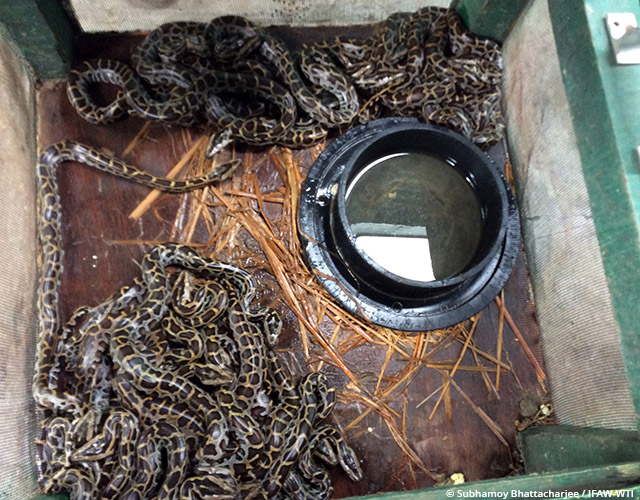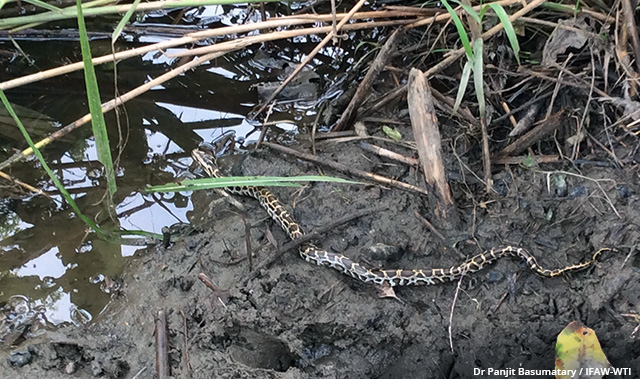CWRC Update: 28 Burmese Python Snakelets Released into the Wild
CWRC, Kaziranga National Park, July 19, 2016: In the second major update to the story published here on June 24 regarding the rescue of a Burmese python and its clutch of eggs by the MVS unit of IFAW-WTI’s Centre for Wildlife Rehabilitation and Conservation (CWRC), 28 snakelets that had hatched at the centre’s Small Animal Nursery were released into the wild on July 16.
Readers will recall that when the female python and approximately 30 eggs had been rescued and brought to CWRC, veterinarians Dr Panjit Basumatary and Dr Samshul Ali had supervised the ideal enrichment of a glass-sided box, placed in a partitioned room in the Small Animal Nursery, as a makeshift nest in which the female python could incubate her eggs.

The snakelets were transported in this crate to a release location deep in the Bagori Forest Range of Kaziranga NP
A subsequent report on July 10 had indicated that two hatchlings had begun to emerge from their eggs. On July 12, the female python was released into the Panbari Reserve Forest to separate her from the neolates. Finally, on July 16, following consultations with the DFO, Eastern Assam Wildlife Division, the CWRC MVS team, Range Forest Officer of the western range and other frontline forest staff released the 28 snakelets that had successfully hatched into a suitable woodland forest in the Bagori Forest Range of Kaziranga NP.
Dr Samshul Ali, who had led the emergency rescue of the female python and her eggs, also supervised the snakelets’ release. “I’m immensely pleased that this case has had such a positive outcome”, he said. “Definitely a feather in CWRC’s cap,” concurred Dr Panjit Basumatary, the centre’s lead veterinarian; “from the rescue to creating the makeshift nest and monitoring the incubation process, to the final release of the snakelets, it’s been a learning experience and very rewarding for all of us.”
As they were released into the wild the snakelets, exposed to sunlight for the first time, circumspectly explored their surroundings before disappearing into their new woodland home.
 A Burmese python snakelet slowly slithers off into its new wild home
A Burmese python snakelet slowly slithers off into its new wild home









